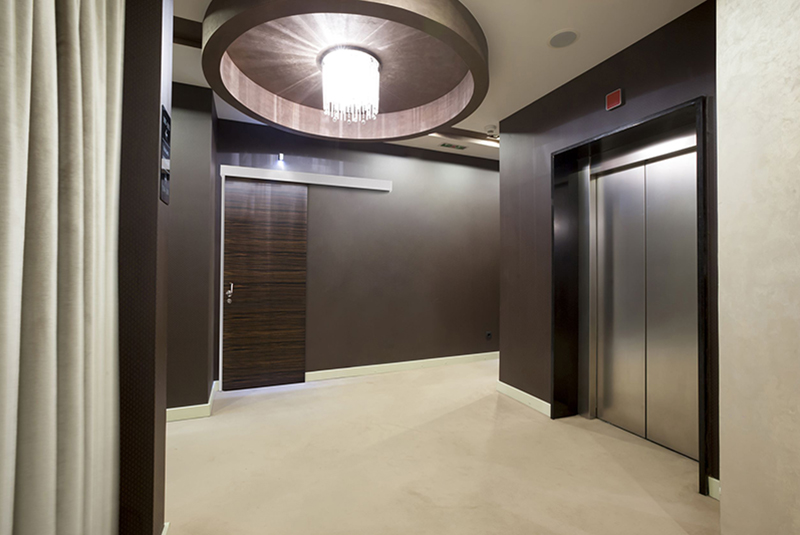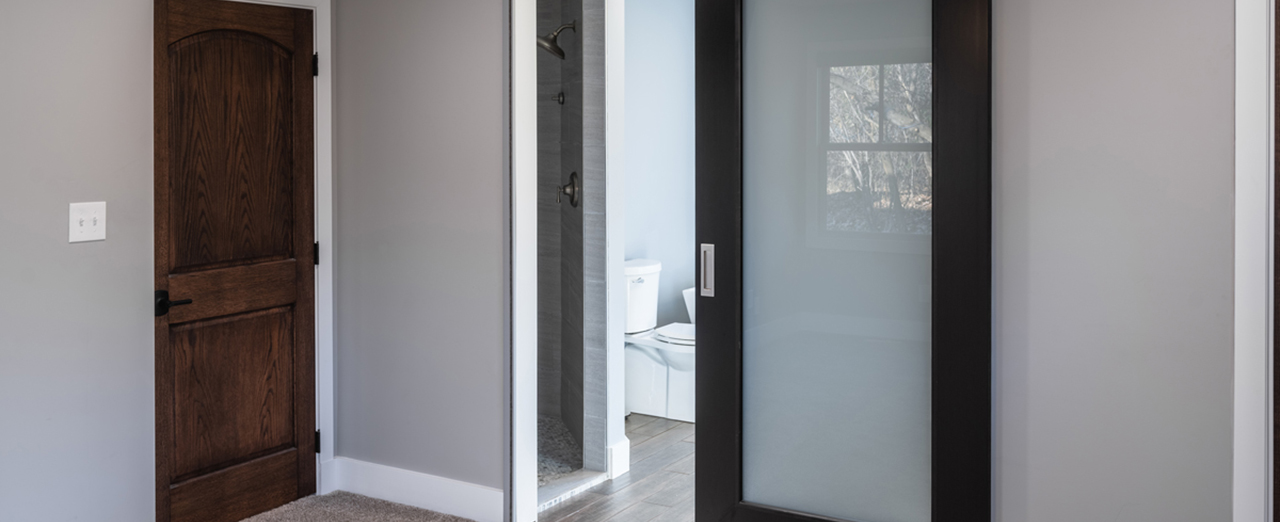
Commercial sliding doors can be used to create wide and flexible openings, which help hospitality settings operate smoothly and efficiently. When they are made with high-quality components, these doors can contribute to a five-star interior design. But where do commercial sliding doors provide the most value?
While ultimately the answer depends on the specific goals of a project, sliding doors can be used in multiple areas within a hospitality setting’s interior—from inside guest rooms to banquet hall entrances—to contribute to a high-end experience.
Sliding doors preserve useable space within hotel rooms
When it comes to hotel room design, maximizing useable space can help hotel designers plan rooms that feel more open. While many elements contribute to space efficiency, door specification can preserve useable square footage to make a smaller room appear larger.
For example, choosing a sliding door system for the restroom can eliminate the need to plan for swing arc trajectories, allowing the more efficient use of a hotel room’s interior. When these types of doors are used in other areas of the built environment, they can also create a more cohesive interior design overall.
Oversized hospitality sliding doors support design flexibility in multi-use areas
In addition to inside guest rooms, designers can use commercial sliding doors for multi-use spaces such as banquet halls and conference rooms. When specified in sizes substantially larger than traditional openings, these doors can help two adjacent spaces blur into one, large space. Gift shops, grab and go markets, phone rooms and breakfast rooms are other areas where sliding doors are frequently utilized in hospitality projects.
Although opening spaces can be beneficial in many instances, it is equally important to acoustically isolate areas to ensure privacy. AD Systems’ sliding doors provide Noise Isolation Class (NIC) ratings up to 39, to mitigate noise transfer thanks in part to their perimeter and drop-down seals. This helps maintain the privacy of events as well as keep louder functions from disturbing guests in neighboring areas.
Fire-rated sliding doors can protect guests during emergencies
For interior hospitality design, doors need to meet relevant building codes in addition to contributing to a luxurious hotel experience. These can range from complying with Americans with Disability Act (ADA) standards to meeting fire- and life-safety code requirements.
Some commercial sliding doors, such as AD Systems’ FireSlide™ door system, combine seals and hardware tested to UL 10B standards to achieve a 45-minute fire rating. This allows occupants time to exit a hotel during an emergency. These hospitality sliding doors also preserve corridor and room space to maintain maneuverability for luggage, catering and housekeeping carts. When used in conjunction with other sliding door systems, fire-rated sliding doors also contribute to a cohesive, overarching design aesthetic. These doors could be a solution for interconnected rooms or corridors, complete with options for privacy, key locks or access control (keycard) integration—depending on application and location-specific code requirements for fire door assemblies.
Hospitality sliding doors optimize visual appeal and ease of use
Commercial sliding doors can provide multiple points of value in hospitality projects. Whether a hotel is being built new or renovated, these door systems can elevate the look and feel of a hotel’s interior while also contributing to its space efficiency and overall functionality.
Designers can look to commercial sliding doors to preserve useable square-footage within guest rooms, support design flexibility in common areas and even provide protection against smoke and fire along paths of egress. And because these systems can be specified in many finish options, they can be integrated seamlessly into nearly any décor style.







